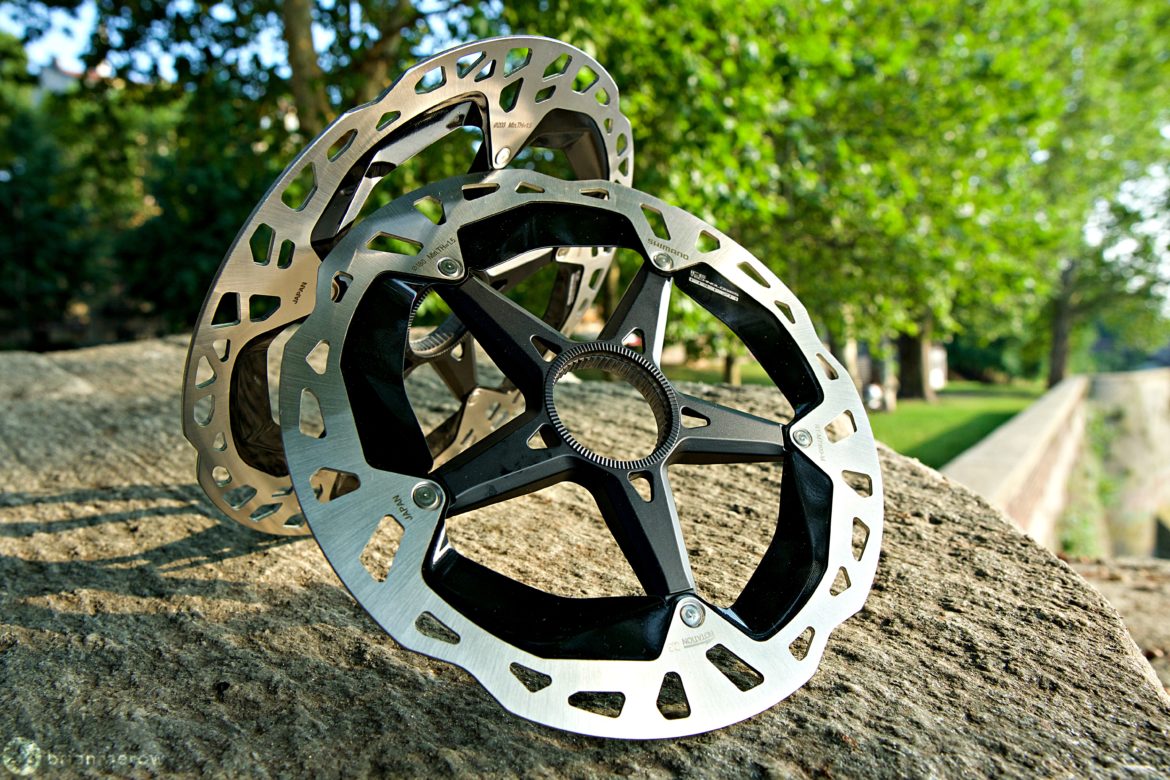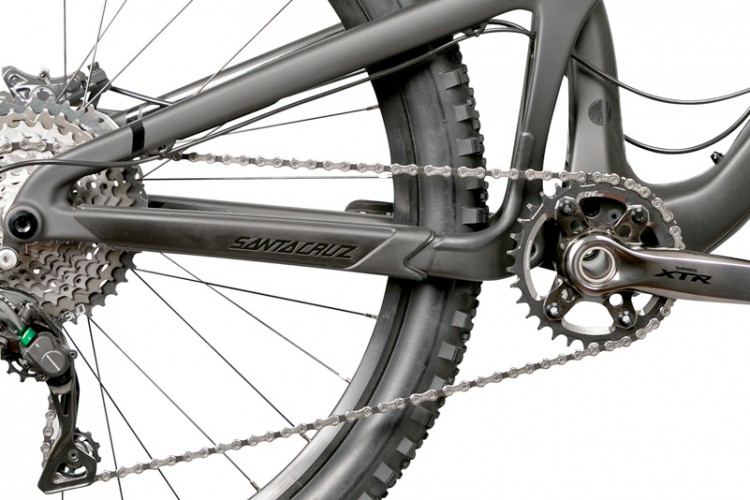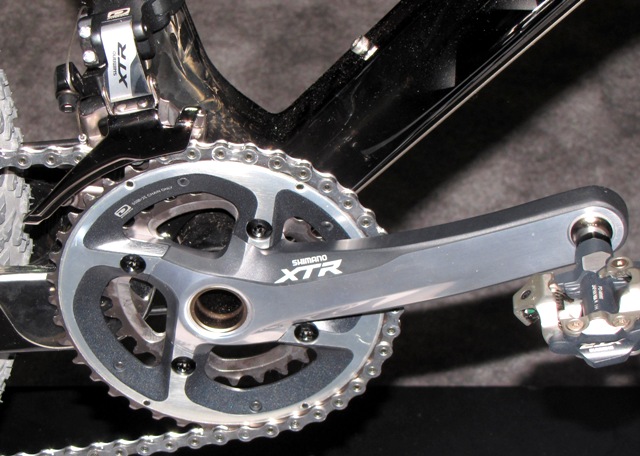
Shimano’s latest XTR offering looks like a slowly polished pearl, and we wanted to share some info and photos of our test group before the rocks have their way with it. We selected the M9120 trail components where applicable since they will be mounted on a long-travel bruiser. The full review of these bedazzling bits will be published once we have thoroughly punished them, and answered every last question about how the system performs. For now, here are some shiny shots.

Let’s begin with the brakes since they are one of the few elements of this mountain bike group that anyone can mount up, regardless of their drivetrain. Everyone on the Singletracks team has had a chance to test out the new XTR and XT 4-pot brakes, and we are pumped to pump them long term. Their overall stopping power feels similar to the truck halting Saint pinchers, with far less weight and some additional modulation. The front M9120 brake tips the scale at 279g straight out of the box and the rear reads 287g with its full 1700mm of hydro hose.

Which shiny part of a DMC DeLorian do you reckon inspired this aesthetic design?

These space-saucer 2-piece rotors weigh 139g with a 180mm diameter and 152g for the 203mm. Both disc sizes will be included in an extensive rotor and pad heat-dissipation test we are currently conducting.

The M9120 pedals weigh 379g. Check out Matt Miller’s review of the M9120 pedals here.

This pie-plate of a cassette can be had in either 10-45t or 10-51t cog arrangements, and I chose to ride the 368g, 10-51t option. I debated this choice for a while because my current drivetrain has a 46t low gear that has suited my climbing style well. In the end, I went with the “climb everything without excuses” gearset.

What does the business end of that derailleur look like? The long cage rear derailleur is designed for the larger 10-51t cassette, or a double chainring setup with the 10-45 cassette. With its long legs and giant pulleys, the mech pounds the scale with a meager 243g.

The M9100 and M9120 cranks can be had in 165mm, 170mm, or 175mm lengths, and the M9100 crankset spreads your feet with a 142mm or 148mm Q-factor, while the M9120 only comes in the 148mm width. I will be testing a 170mm set for added rock clearance, with the wider 148mm stance.



The XTR hubs come in a Boost 148/110 width, or 142/100 spacing, 28 or 32 straight pull or J-bend spokes, and use the centerlock rotor retention system, as they always have. I went with J-bend spokes because I like to hang out deep in the mountains, and J-bend replacement spokes are easier to come by at most shops. The Boost, 32-hole hubs weigh 124g up front and 236g at the rear. I will be building them up with triple-butted DT Swiss Competition spokes and alloy nipples, laced to DRC Bigfoot alloy rims.
Quick component weight reference
- Pedals w/o cleats 397g
- 32t chainring* 67g
- Cassette 368g
- Uncut chain 268g
- Long cage derailleur 243g
- Shifter & cable 126g
- Rear hub 236g
- Front hub 124g
- 170mm crank, 34t ring 515g
- 180mm rotor & lockring 139g
- 200mm rotor & lockring 152g
- Rear brake uncut 287g
- Front brake uncut 279g
- Rotor lockring* 10g
- Total groupset weight 3,134g
*excluded from total
We would like to thank Shimano for sending the XTR group for review. Stay tuned for the long-term review.





















2 Comments
Jul 12, 2019
Jul 12, 2019